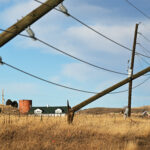Years after a fast-moving fire killed 100 people gathered for a heavy metal band at a Rhode Island nightclub, there’s one thing that safety officials are continuing to grapple with: finding ways to change basic, human behavior.
Although states around the country changed fire codes at clubs to try to prevent fires, there’s one key aspect to The Station nightclub fire and other such tragedies: many of those who died instinctively tried to exit out the same door they entered.
In the end, that created a logjam that trapped many of those who ultimately perished, most within two minutes. Eight of those killed either lived or worked in Connecticut.
“Most people, if you’re getting up in a restaurant to pay your bill, couldn’t manage that within 90 seconds, let alone 400 people trying to get to the same place at the same time,” said Kenneth Kuntz, an investigator for the U.S. Fire Administration who helped write a report on the disaster.
Experts say having a plan saves time in a crisis, especially in a fire such as the one that destroyed The Station nightclub in West Warwick on Feb. 20, 2003. It began when pyrotechnics for the heavy metal band Great White ignited flammable soundproofing foam installed around the stage.
Clubs owners Jeffrey and Michael Derderian pleaded no contest recently to 100 counts of involuntary manslaughter. Michael Derderian was sentenced to four years in prison, while Jeffrey Derderian was put on three years of probation and ordered to perform 500 hours of community service. Band tour manager Daniel Biechele, who lit the pyrotechnics, pleaded guilty earlier this year to 100 counts of involuntary manslaughter and was sentenced to four years in prison.
An overcrowded building, faulty doors, illegal foam and poorly marked exits also contributed to the death toll.
Rhode Island’s fire codes — as well as though of other states around the country — were changed after the tragedy to make spotting those exits easier. For example, in Rhode Island, nightclub owners at the start of a show are supposed to turn up the lights, turn down the noise and point out escape routes.
Seeking to avoid a similar catastrophe, fire marshals in Texas fanned out a year after The Station fire to examine 189 bars and clubs outside major cities, which they believed might not receive as much scrutiny as urban nightspots.
All but seven violated state fire codes in some way, a finding that probably offers a glimpse into an even larger problem, said Wayne Smith, a special assistant Texas fire marshal. Some establishments didn’t have illuminated emergency exit signs. Others lacked emergency exits altogether.
Sending an inspector to enforce fire codes at every bar and club is probably impossible, which makes educating patrons even more crucial, Smith said.
“There’s no way we’d ever be able to march through Texas and turn around and get through all of them,” Smith said.
His office now helps run a pilot program at the University of Texas at Austin that encourages students to identify two alternate exits and create an escape plan when they enter nightclubs. The message is reinforced on the campus’ closed-circuit television system and with posters on buses that transport students to Austin’s entertainment district.
Elliott Reep, 22, a student who helps coordinate the program, said he is trying to secure rights to portions of the video so the group can mail a CD containing clips of the catastrophe to off-campus students.
“It takes something very dramatic, something real world to affect them,” he said. “It’s a lot better than handing out a pamphlet on fire safety.”
The blaze — the fourth-deadliest nightclub fire in U.S. history — was captured by a TV cameraman who was inside the club filming footage for a piece on safety in public places. The images of the very first moments of the fire show concertgoers jostling and panicking as flames quickly spread.
“All those pictures on the news and the families talking about how they lost loved ones — it just makes you more aware,” said Felicia Loiz, 21, a student at Johnson & Wales University in Providence.
Loiz said she now looks for alternate exits inside clubs and once left a Providence nightspot because it had too many people, too few doorways and not enough security.
“I walked in, looked around and walked out,” she said. “This wasn’t the place for me.”
Still, not everyone has changed their habits when they go to a club.
“I just feel like that’s a freak accident,” said 20-year-old Lindsey Viveiros, a student at Johnson & Wales University.
Was this article valuable?
Here are more articles you may enjoy.

 Flooding in California Leads to Soaked Roads, Water Rescues and 1 Death
Flooding in California Leads to Soaked Roads, Water Rescues and 1 Death  Trump Sues BBC for $10 Billion Over Documentary Edit
Trump Sues BBC for $10 Billion Over Documentary Edit  Waymo to Update Software Across Fleet After Major Power Failure
Waymo to Update Software Across Fleet After Major Power Failure  Rare Weather Warning Issued as Strong Gusts Fuel Colorado Wildfire Threats
Rare Weather Warning Issued as Strong Gusts Fuel Colorado Wildfire Threats 